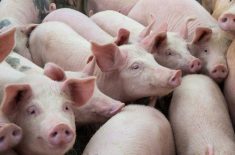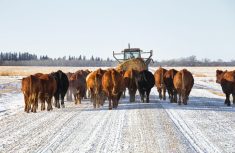Jan. 4 — Auction markets have been rather quiet over the past couple weeks due to the holiday schedule. Feeder cattle prices appear to have stabilized for the time being.
Looking forward, there are still a number of risks weighing on the market in the short term. Finishing feedlot margins continue to hover in red ink and buyers are being fussier when purchasing replacement cattle. While fed cattle prices strengthened in the final week of 2009, we have yet to see this spill over into the feeder market. Colder temperatures have also tempered buying enthusiasm and feed grain prices are starting to ratchet higher, adding further pressure to feeding margins.
Read Also

U.S. livestock: ‘Cattle on feed’ report supports prices
Chicago cattle futures rose as the USDA’s ‘Cattle on Feed’ report showed inventories two per cent down from a year…
U.S. feeder cattle prices are expected to strengthen in the second quarter due to tighter available supplies. The number of cattle outside feedlots on pasture is expected to be down from year-ago levels, which will cause demand to increase for Canadian cattle later in spring. The U.S. market should start to show a premium to Canadian values at this time, encouraging the export program.
The industry has been contracting for three years in a row and this trend will likely continue in 2010.
Lower calf crops, lower on-feed numbers and lower beef production should bode well for the industry longer-term, and prices are expected to turn around in the in the April-through-June time frame.
Looking at past history, when the U.S. economy moves into the expansion phase, this is usually a positive financial period for the cow/calf producer. Feeder cattle prices tend to lag the overall economy by eight to 10 months because it takes time for consumers to change or increase their spending patterns. By the fourth quarter of 2010, the feeder cattle price structure should start to encourage heifer retention due to stronger beef prices.
— Jerry Klassen is a commodity market analyst in Winnipeg and maintains an interest in the family feedlot in southern Alberta. He can be reached by email at [email protected] for questions or comments.
The material contained herein is for information purposes only and is not to be construed as an offer for the sale or purchase of securities, options and/or futures or futures options contracts. While the information in this publication cannot be guaranteed, it was obtained from sources believed to be reliable. The risk of loss in futures trading can be substantial. The article is an opinion only and may not be accurate about market direction in the future. Do not use this information to make buying or selling decisions.















